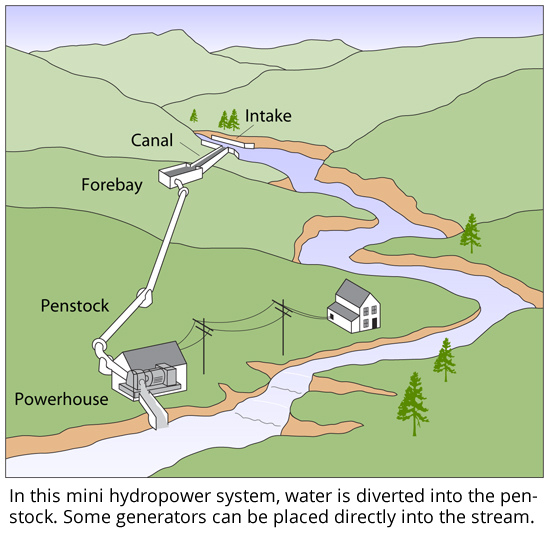

Hydro power plants allow us to harness the kinetic energy of water to create electric energy. They operate on the simple concept of water turning a turbine, which then rotates a generator, which produces electricity. In a run-of-the-river system, the force of the current applies the required pressure, while in a storage system, water is accumulated in reservoirs created by dams, then released when the demand for electricity is high. The Erathna Small Hydropower Project uses directed water in a run-of-the-river system.
The process of generating hydroelectric power is as follows:
- Current pulls the water through the penstock, a pipeline that leads to the turbine. Water pressure increases as it flows through the penstock.
- The water strikes the large turbine blades, turning them. As they rotate, so do a series of magnets inside the generator above, connected to the turbine by way of a shaft.
- As the large magnets rotate past copper coils, an alternate current (AC) is produced.
- A transformer converts the alternate current (AC) to current of a higher-voltage.
- Finally, four wires leave the power plant – three carrying power and one common neutral wire.
- Meanwhile, used water flows through pipelines called tailraces, to re-enter the river downstream.


